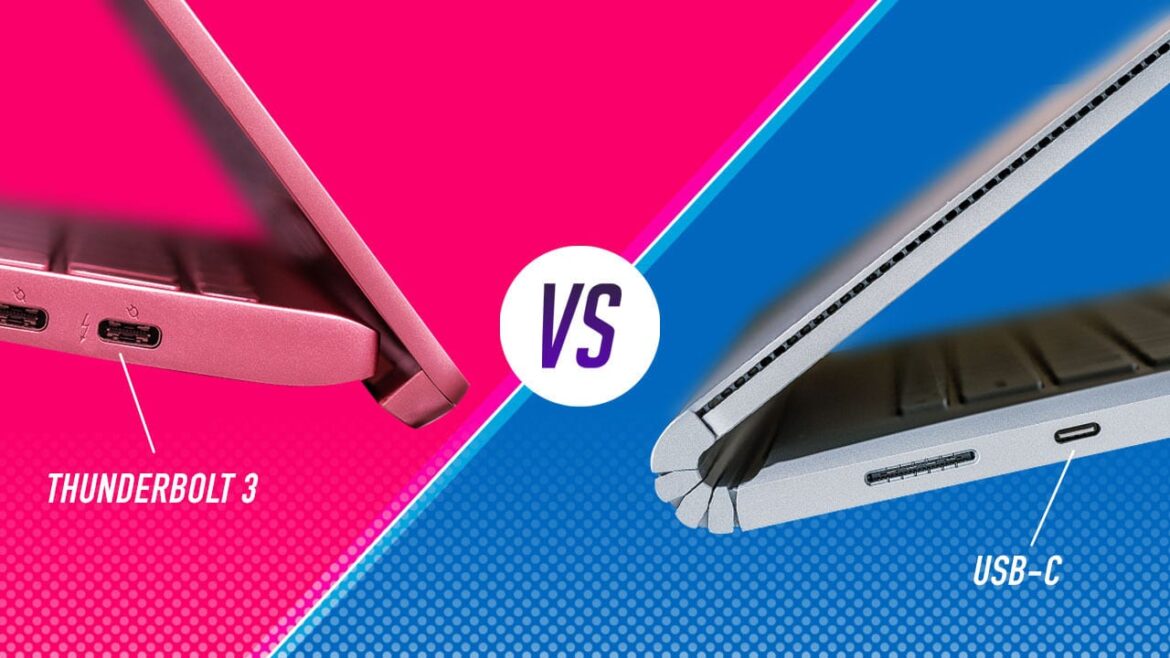2.6K
The differences between Thunderbolt and USB-C cables are difficult to recognise at first glance. Externally, both types of cable are similar, but not when it comes to their functions. Here you can find out where the differences lie.
Difference Thunderbolt and USB-C
Over time, more and more cable and connector variants have come onto the market. Two of them are USB-C and Thunderbolt. USB-C and the Thunderbolt cables of versions 3 and 4 look identical on the outside. But there are some differences between them.
- USB-C cables have the advantage over their predecessors that you can’t plug them into a device the wrong way round. They can be plugged in in both directions. Thunderbolt 3 or 4 cables also have this feature. So they can also be plugged in both ways.
- If you have a Thunderbolt 3 or Thunderbolt 4 cable, you can also use it as a USB-C cable. For example, you can charge a device that has a USB-C port.
- But: It doesn’t work the other way round. So you can’t use a USB-C cable as a Thunderbolt cable to access the Thunderbolt port’s mini-displayport or PCI-Express 3.0 features, for example.
- Therefore, pay attention to which technology your device is designed for. If it is designed for USB 3.2, you can use both USB-C and Thunderbolt 3 or 4 cables. If, on the other hand, it is designed for Thunderbolt, you cannot use USB-C cables.
- Another difference concerns the transfer speed. While USB-C cables with USB 3.2 of the first generation manage 10 gigabytes per second and cables of the second generation still manage 20 gigabytes per second, from Thunderbolt 3 onwards you can achieve between 20 and 40 gigabytes per second, depending on the type of cable.
This is Thunderbolt
Intel and Apple developed Thunderbolt. This system allows many more devices to be connected than via USB.
- From Thunderbolt version 3 onwards, the connectors look externally like USB-C cables.
- Thunderbolt cables can not only power devices, but also support many interfaces.
- You can also use monitors via an HDMI, DisplayPort1.2, VGA or DVI connection. All you need is the appropriate adapter.
-
- To make the right choice when buying a new cable or device, look for compatibility with Thunderbolt and USB-C respectively.


